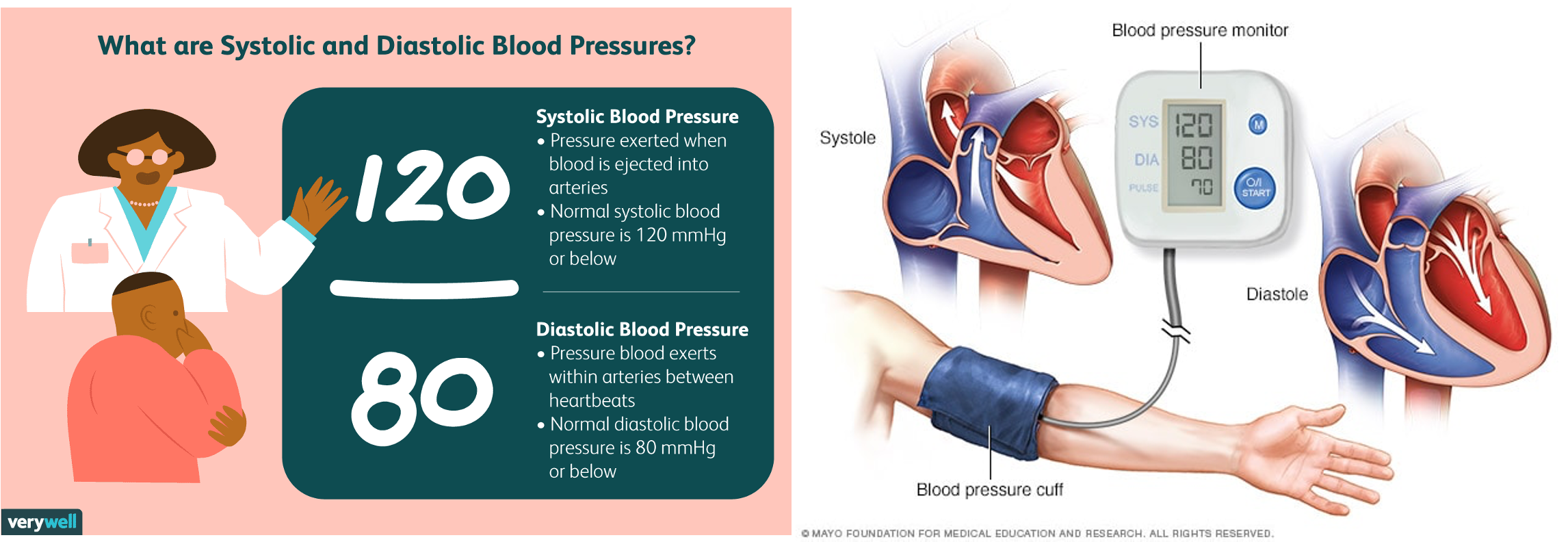MED

- Using the Sphygmomanometer (digital or mercury)
- Palpation method ⇒ systolic pressure
- It is better to use the two method simultaneously start by palpation method Pulse pressure ⇒ systolic pressure - diastolic pressure < 60 mmHg
- Systolic/diastolic pressure
- Korotkoffp sounds
- Normal <140/90 mmHg (lower in diabetes)
- Use larger cuff width for large arms
Difference between arms of <10 mmHg Pulses paradoxes: exaggerated reduction in BP with inspiration (>10 mmHg) Postural hypotension
Skill
https://next.amboss.com/us/article/rM0fJg?q=blood+pressure+measurement#Z58efb7ca2394a6baa2250edfd766164a The pressure exerted by the circulating volume of blood in the arteries (against arterial walls)
-
Systolic: The top number (highest); represents the pressure generated when the ventricles contract
-
Diastolic: The below number; represents the residual pressure in the circulation at the end of cardiac contraction
-
Pulse Pressure: Difference between the systolic and diastolic


Equipment
 Aneroid sphygmomanometers, Mercury, Electronic
Aneroid sphygmomanometers, Mercury, Electronic
A) Sphygmomanometer
- Inflatable cuff
- Pressure bulb or another device for inflating cuff
- Manometer
B) Stethoscope
Types of sphygmomanometers
- Aneroid
- Circular gauge for registering pressure
- Must be checked, and calibrated every 3 to 6 months
- Electronic
- Provides a digital readout of the blood pressure
- No stethoscope is needed
- Easy to use
- Mercury
- A column of mercury rises with an increased pressure as the cuff is inflated
- Must be checked and calibrated every 6 to 12 months
Measuring the BP
- Before measuring the BP
- Instruct your patients to avoid coffee, smoking or any other unprescribed drug with sympathomimetic activity on the day of the measurement
- Position of the Patient
-
Sitting position
-
Arm and back are supported.
-
Feet should be resting firmly on the floor
-
Feet not dangling.
- Size of the cuff The cuff should cover about 80 percent of the arm circumference.(two-thirds of the distance from elbow to shoulder).
-
If it is too small, the readings will be artificially elevated.
-
The opposite occurs if the cuff is too large.
- Position of the arm Raise patient arm so that the brachial artery is roughly at the same height as the heart.
If the arm is held too high, the reading will be falsely lower, and vice versa.
- Palpate and listen
- Roughly estimate the systolic BP by palpating the radial artery and inflating the cuff until it disappears
- Palpate for brachial artery pulse and place the stethoscope over it
- Inflate the cuff to a pressure 20-30mmHg above the estimated value.
- Deflate slowly and listen for pulsation from artery
- Systolic blood pressure is the pressure at which you can first hear the pulse.
- Diastolic blood pressure is the last pressure at which you can still hear the pulse
- This pattern of sounds is called Korotkoff Sounds
- Avoid moving your hands or the head of the stethoscope while you are taking readings
- Tell the patient their reading and thank him




